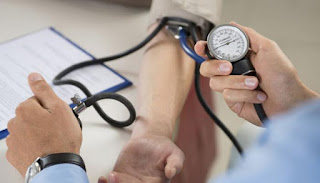Effect Of A Home-Based Wearable Continuous ECG Monitoring Patch On Detection Of Undiagnosed Atrial Fibrillation
Prof.Dr.Dram,profdrram@gmail.com,Gastro Intestinal,Liver Hiv,Hepatitis and sex diseases expert 7838059592,9434143550
 Opportunistic screening for atrial fibrillation (AF) is recommended, and improved methods of early identification could allow for the initiation of appropriate therapies to prevent the adverse health outcomes associated with AF.The primary end point was the incidence of a new diagnosis of AF at 4 months among those randomized to immediate monitoring vs delayed monitoring. A secondary end point was new AF diagnosis at 1 year in the combined actively monitored groups vs matched observational controls. Other outcomes included new prescriptions for anticoagulants and health care utilization (outpatient cardiology visits, primary care visits, or AF-related emergency department visits and hospitalizations) at 1 year.
Opportunistic screening for atrial fibrillation (AF) is recommended, and improved methods of early identification could allow for the initiation of appropriate therapies to prevent the adverse health outcomes associated with AF.The primary end point was the incidence of a new diagnosis of AF at 4 months among those randomized to immediate monitoring vs delayed monitoring. A secondary end point was new AF diagnosis at 1 year in the combined actively monitored groups vs matched observational controls. Other outcomes included new prescriptions for anticoagulants and health care utilization (outpatient cardiology visits, primary care visits, or AF-related emergency department visits and hospitalizations) at 1 year.
The randomized groups included 2659 participants (mean [SD] age, 72.4 [7.3] years; 38.6% women), of whom 1738 (65.4%) completed active monitoring. The observational study comprised 5214 (mean [SD] age, 73.7 [7.0] years; 40.5% women; median CHA2DS2-VASc score, 3.0), including 1738 actively monitored individuals from the randomized trial and 3476 matched controls. In the randomized study, new AF was identified by 4 months in 3.9% (53/1366) of the immediate group vs 0.9% (12/1293) in the delayed group (absolute difference, 3.0% [95% CI, 1.8%-4.1%]).
At 1 year, AF was newly diagnosed in 109 monitored (6.7 per 100 person-years) and 81 unmonitored (2.6 per 100 person-years; difference, 4.1 [95% CI, 3.9-4.2]) individuals. Active monitoring was associated with increased initiation of anticoagulants (5.7 vs 3.7 per 100 person-years; difference, 2.0 [95% CI, 1.9-2.2]), outpatient cardiology visits (33.5 vs 26.0 per 100 person-years; difference, 7.5 [95% CI, 7.2-7.9), and primary care visits (83.5 vs 82.6 per 100 person-years; difference, 0.9 [95% CI, 0.4-1.5]). There was no difference in AF-related emergency department visits and hospitalizations (1.3 vs 1.4 per 100 person-years; difference, 0.1 [95% CI, −0.1 to 0]).
Among individuals at high risk for AF, immediate monitoring with a home-based wearable ECG sensor patch, compared with delayed monitoring, resulted in a higher rate of AF diagnosis after 4 months. Monitored individuals, compared with nonmonitored controls, had higher rates of AF diagnosis, greater initiation of anticoagulants, but also increased health care resource utilization at 1 year.
- Kidney stones universally present hazard in north india,dillution by water prevent it
- Steroid and placebo effect equally for mild persisting asthma with low sputum eosinophils
- Government wants to fix public healthcare staff shortages with ayush docs: will it work?
- Plea in hc for payment of salaries of edmc, north mcd teachers and doctors
- 7 indian pharma companies named in us lawsuit over inflating generic drug prices
- Woman in up dies after explosion in her mouth during treatment,what is diagnosis?
- Woman in up dies after explosion in her mouth during treatment,what is diagnosis?
- Woman in up dies after explosion in her mouth during treatment,what is diagnosis?
- Air pollution ! mothers organising rally in london,anaesthetist choosing gas,will india follow?
- Cardiac arrest is always not sudden as understood -a study

 Comments (
Comments ( Category (
Category ( Views (
Views (